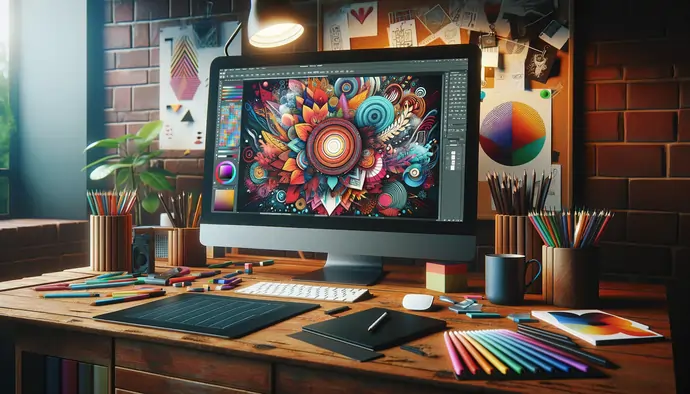0818 Work Insights
Your go-to source for the latest work trends, tips, and advice.
Graphic Design Software: The Secret Sauce for Stunning Visuals
Unleash your creativity with the best graphic design software! Elevate your visuals and discover the secret sauce to stunning designs today!
Top 5 Graphic Design Software Programs Every Designer Should Know
In the fast-paced world of graphic design, having the right tools at your fingertips is essential. Here are the Top 5 Graphic Design Software Programs every designer should know:
- Adobe Photoshop - The industry standard for raster graphics editing, Photoshop is versatile and widely used for photo editing, digital painting, and compositing.
- Adobe Illustrator - Ideal for creating vector graphics, Illustrator allows designers to create logos, icons, and illustrations with precision and scalability.
- CorelDRAW - Popular among professionals, CorelDRAW is known for its user-friendly interface and powerful vector design tools.
- Sketch - A favorite among digital designers, Sketch specializes in web and mobile app design with its intuitive features and plugins.
- Canva - While more accessible for beginners, Canva offers a range of customizable templates and design elements for quick graphic design needs.
Mastering these graphic design software programs can significantly enhance your creative process and open up numerous opportunities. Each software has its unique strengths, catering to different aspects of design—from creating stunning visuals to intricate illustrations. Regardless of your design niche, equipping yourself with knowledge of these tools can elevate your work and ensure you are well-prepared for any project that comes your way.

How to Choose the Right Graphic Design Software for Your Projects
Choosing the right graphic design software for your projects is crucial for achieving the desired results. With an overwhelming number of options available, consider your specific needs first. Ask yourself questions like: what type of design work will you be doing? Are you focusing on graphic design, web design, or perhaps logo creation? Once you understand your primary focus, you can narrow down your options. Additionally, think about the features you need, such as photo editing capabilities, vector graphics support, or collaboration tools. Creating a list of your requirements can help you make an informed decision.
Once you've identified your needs, take the time to compare different graphic design software options. Look for user reviews and tutorials to gauge the learning curve and determine whether the software aligns with your skill level. Some software solutions are more user-friendly for beginners, while others offer advanced features suitable for professional designers. Don't forget to consider the pricing options as well; many programs offer free trials or subscription models that can impact your budget. Ultimately, the goal is to select a tool that enhances your creativity and streamlines your workflow.
What Makes Graphic Design Software Essential for Stunning Visuals?
Graphic design software plays a crucial role in creating stunning visuals that captivate audiences and communicate messages effectively. In today's digital age, visuals can make or break a brand's identity, making it essential for designers to have access to powerful tools that simplify the creative process. From intuitive user interfaces to advanced editing features, these software programs enable designers to manipulate images, create intricate graphics, and produce layouts that are both aesthetically pleasing and functional. Moreover, many graphic design tools come equipped with templates and asset libraries, which can significantly reduce the time spent on projects while ensuring a high level of quality.
One of the standout features of graphic design software is its ability to enhance collaboration among design teams. With cloud-based solutions and real-time editing capabilities, designers can work together seamlessly, regardless of their geographical locations. This collaboration fosters creativity and innovation, allowing for a diverse range of ideas to flourish. Additionally, the continuous updates and support provided by leading graphic design software developers ensure that users have access to the latest tools and trends in the design industry. In summary, investing in high-quality graphic design software is essential for anyone looking to create eye-catching visuals that resonate with their audience.